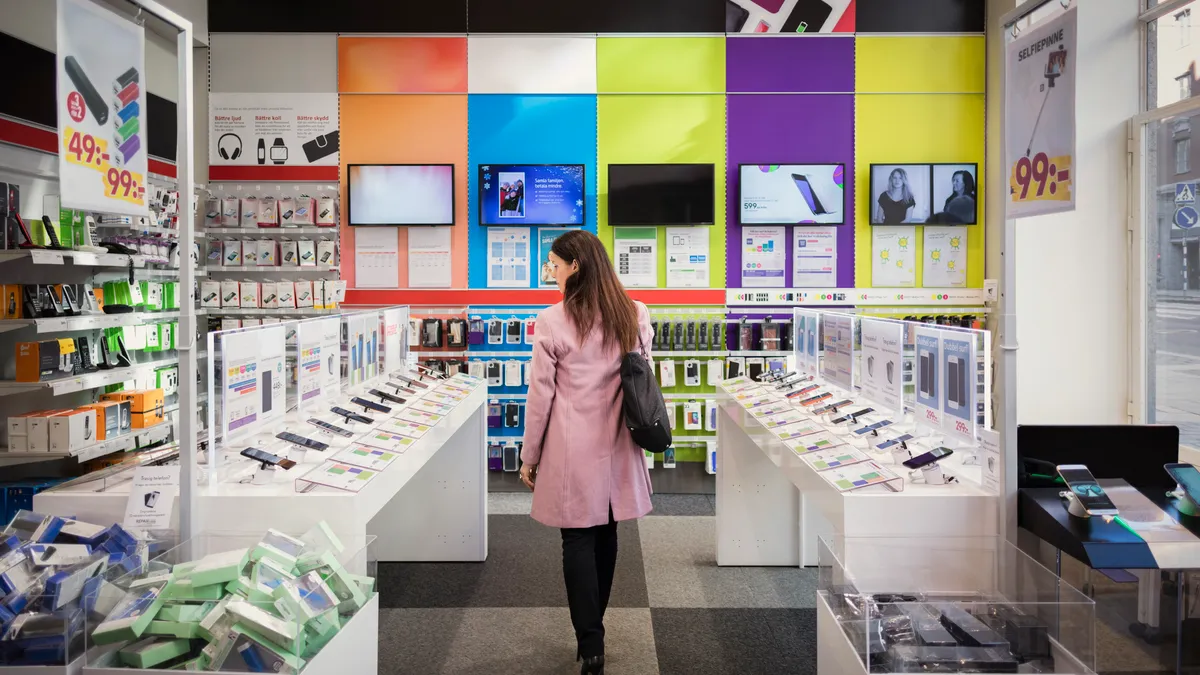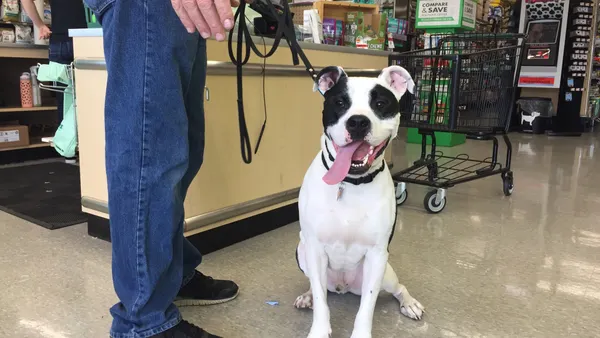Brick-and-mortar stores won’t be going away anytime soon. According to the National Retail Federation, 80 percent of shopping now takes place in-store. After years of isolated shopping and dining from home, people are eager to get back out into their communities.
And yet, COVID altered consumer expectations—permanently. What’s more, inflation, high gas prices, and other monetary pressures are influencing where and how people are spending. Consumers want flight-to-value: convenience, affordability, and added value. Many of our clients at Imagine are asking how they can connect their customers’ online experience to the offline experience that only brick-and-mortar can deliver.
The trick to achieving this in such a difficult landscape? Agility.
To be more agile, retailers have to up their game and demonstrate to customers why their unique merchandise mix not only fits their needs, but is better experienced in-store rather than online. Let’s look at some of the ways that you can attract in-person shoppers by making your brick-and-mortar stores into a destination and an experience.
1. Set the scene
Your store environment is crucial. This goes beyond what’s on your shelves or how friendly your customer service staff is. A customer’s experience of your store begins and ends in your parking lot, and encompasses their entire journey inside.
How can you make getting in the door, finding the desired products, and completing the purchase as easy as possible? At the same time, how can you create moments throughout your store to encourage customers to stop and interact with the products and services you’re promoting?
The following tips will help you curate your customers’ journey to be one they find worthy of repeating again and again.
2. Be strategic with signage
Your signage can be used in strategic layers to optimize store navigation, increase sales, and solidify branding.
There are four types of signs to consider: environmental, promotional, cross-promotional, and navigational. Environmental signs contribute to your stores’ overall look and feel, remain in place for an extended period of time, and should tie closely to your brand. Promotional and cross-promotional signs are seasonal and draw attention to special, limited-edition products. Navigational signage helps customers find what they need in your store.
Layered effectively with the right messaging, signage is your best tool to articulate the flight-to-value your customers want.
Not only can it choreograph a stress-free and efficient experience, signage can also be used to encourage exploration and dwell-time by highlighting exciting promotions, encouraging rewards program sign-ups, and calling attention to products and services.
3. Tap into design
Thanks to social media, our world is more visual than ever. The design of a retail location can greatly influence the in-store experience. Who hasn’t stopped to snap a pic for social when they stumble upon interesting décor and other unique design elements?
Additionally, design doesn’t have to be one-size-fits-all. For national retailers, regionally customized design aids in maximizing relevance to local audiences. For example, we partnered with Meijer grocery stores to produce a compelling 14’ x 5’ community spotlight area. This environmental element combines historically relevant photos with fun tidbits about the community. For Meijer’s urban stores, we curated a hand-painted map and integrated locally sourced mixed media elements, like reclaimed wood, into store designs.
At Imagine, we use state-of-the-art variable data printing to help our partners leverage localization and maximize impact. Our technology can execute multiple custom designs in a single run, delivering hyper-relevant, cost-effective content at the speed of retail.
4. Prioritize staffing and training
From supply chain uncertainty, to inflation costs, to a looming recession: retailers are grappling with major challenges. Another obstacle? Staffing. Hiring the right people, training them properly, and treating them well promotes a positive reputation for your brand in addition to improving the customer experience.
Signage may not be the first thing you think of when it comes to staffing.
But picture this: A shipment of seasonal POP materials arrives at one of your locations. A part-time employee clocks in for his shift between college classes and is tasked with installing the new materials. He opens a box and finds myriad different pieces, and no instructions. He looks around and sees five more signage boxes; feeling discouraged and overwhelmed, he takes out his phone instead.
Another scenario: A retired teacher picks up a few shifts to get out of the house, stay active, socialize—and get your employee discount. She loves her job, but there’s one monthly task she loathes: swapping out the end caps and aisle violators. Her arthritis and the intricate connection points make this difficult for her.
Bottom line: if your signage solutions are challenging to install, chances are they’re being discarded (and your employees are getting frustrated).
If you’re thinking, “Not my stores!”—think again.
We recently partnered with a 10,000+ location retailer to audit its in-store marketing. We discovered that, on average, store employees discard 2 out of every 3 signs, resulting in massive waste of marketing dollars. What’s more, signage compliance and store performance were strongly correlated, highlighting the opportunity for the client to uncover significant savings and profit.
With this in clear focus, we reimagined its process and achieved a storewide labor reduction of almost 17,000 hours annually. This, in turn, freed up employees to consistently and effectively serve customers.
Ensuring your signage is simple to install and dismantle, and that each store gets exactly what it needs, is vital to maximizing the impact of your marketing dollars. Imagine has the technology and innovative solutions that make compliance simple.
5. Embrace integrated technology
Even before the pandemic, the world was going through a digital transformation. But when COVID hit, the transformation accelerated to a fever pitch.
Suddenly everything had to be online—from kindergarteners in school remotely, to grandmothers ordering grocery delivery. And guess what? This has permanently changed how we live our lives.
Knowing this, how can you integrate digital technology into a physical store experience to meet your customers’ expectations? What is the connection between the digital shelf and the store shelf?
There are many ways to embrace digital. One solution that’s been successful for several clients is custom QR codes. Easier than ever to use, QR codes can be added to signage throughout the store, guiding shoppers to promotions, loyalty programs, menus, and other specialty offerings.
Mobile apps are also a great way to incorporate technology—when done well. Apps must be frictionless and add value. List builders, store maps, app-only promos, and strong Wi-Fi are just a few ways our clients are driving more online/offline interaction, adding to that sought-after flight-to-value.
6. Lean into adaptability
If COVID has taught us anything, it’s that we are resilient; and when we are flexible, we can adapt to changing consumer demands. Health and safety messaging may have been paramount a year ago, but today’s consumer is seeking value and more bang for their buck.
Imagine is your partner in staying agile in these dynamic market conditions. Many of the world’s most loved brands lean on Imagine as a strategic partner because we have the resources and experience needed to make changes quickly.
Our expertise and deep industry connections empower our partners with the capacity to pivot when plans must change. For decades, we’ve been trusted to deliver stunning visual communications, uncompromising service, and innovative solutions that transform brick-and-mortars from average to extraordinary.
Ready to transform your brick-and-mortar experience? Download our checklist to get started.










